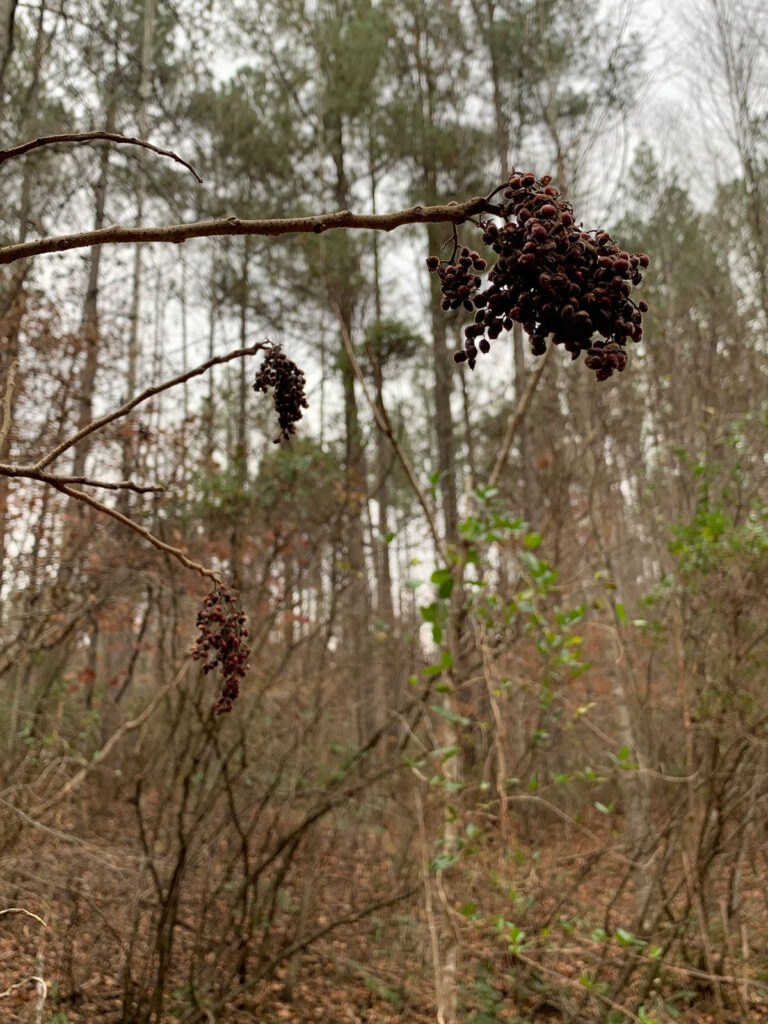Sumac in general is a great plant for wildlife, especially birds and small mammals, who all like to eat the fruit in the wintertime. I had been familiar with “Staghorn sumac”, however when looking at the sumac here, it was obvious this was not the same, as the seeds are in an upright conical shape, whereas this Winged Sumac the seeds were a bit, well, droopy.
You can eat the berries of this plant, which have a slight lemon-ish flavor to them.
Alternate Name: Shining Sumac, Flameleaf Sumac, Mountain Sumac, Dwarf Sumac, Wing-rib Sumac, Black Sumac, Upland Sumac Size: 20-35' tall Family: Anacardiaceae (Sumac Family) Habitat: "Dry hillsides; open woods; prairies; thickets Found in scrub on limestone outcrops and rocky slopes, prairies, plains, and in sandy woodlands. Identification: "Small tree with short, crooked trunks and open branching. Glossy, dark-green, pinnately compound leaves turn reddish-purple in the fall. Yellowish-green flowers are succeeded by drooping, pubescent, pyramidal fruit clusters which turn dull red and persist through winter. It is easily distinguishable from other sumacs by the winged leaf axis and watery sap. Often forms thickets." From wildflower.org Uses: The sour fruit berries can be nibbled, made into a drink like lemonade, or dried and used as a spice or lemon-substitute.











